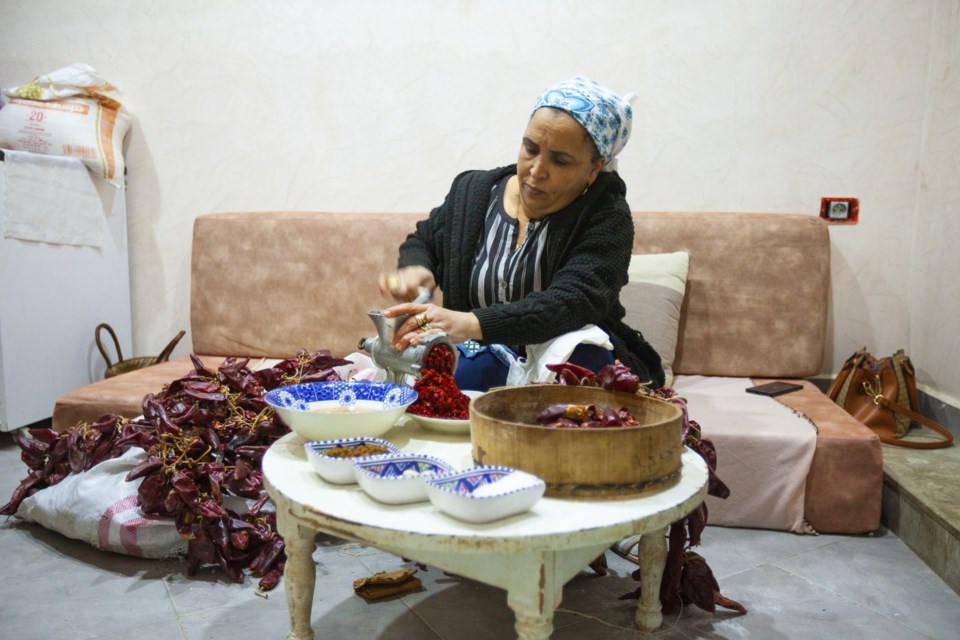NABEUL, Tunisia (AP) — For years, Tunisians have been picking bright red peppers, combining them with garlic, vinegar and spices and turning them into a saucy spread called harissa. The condiment is a national staple and pastime, found in homes, restaurants and food stalls throughout the coastal North African nation.
Brick-red, spicy and tangy, it can be scooped up on bread drizzled with olive oil or dabbed onto plates of eggs, fish, stews or sandwiches. Harissa can be sprinkled atop merguez sausages, smeared on savory pastries called brik or sandwiches called fricassées.
In Nabeul, the largest city in Tunisia’s harissa-producing Cap Bon region, local chef and harissa specialist Chahida Boufayed called it “essential to Tunisian cuisine.”
“Harissa is a love story,” she said at a festival held in honor of the chili paste sauce in the northeastern Tunisian city of Nabeul earlier this month. “I don’t make it for the money.”
Aficionados from across Tunisia and the world converged on the 43-year-old mother’s stand to try her recipe. Surrounded by strings of drying baklouti red peppers, she described how she grows her vegetables and blends them with spices to make harissa.
The region’s annual harissa festival has grown in the two-plus years since the United Nations cultural organization, UNESCO, recognized the sauce on a list of items of intangible cultural heritage, said Zouheir Belamin, the president of the association behind the event, a Nabeul-based preservation group. He said its growing prominence worldwide was attracting new tourists to Tunisia, specifically to Nabeul.
UNESCO in 2022 called harissa “an integral part of domestic provisions and the daily culinary and food traditions of Tunisian society, adding it to a list of traditions and practices that mark intangible cultural heritage including Ukrainian borscht and Cuban rum.
Already popular across North Africa as well as in France, the condiment is gaining popularity throughout the world from the United States to China.
Seen as sriracha’s North African cousin, harissa is typically prepared by women who sun-dry harvested red peppers and then deseed, wash and ground them. Its name comes from “haras” – the Arabic verb for “to crush” – because of the next stage in the process.
The finished peppers are combined it with a mixture of garlic cloves, vinegar, salt, olive oil and spices in a mortar and pestle to make a fragrant blend. Variants on display at Nabeul’s Jan. 3-5 festival used cumin, coriander and different spice blends or types of peppers, including smoked ones, to create pastes ranging in color from burgundy to crimson.
“Making harissa is an art. If you master it, you can create wonders,” Boufayed said.
Mehdi El Arem And Sam Metz, The Associated Press




